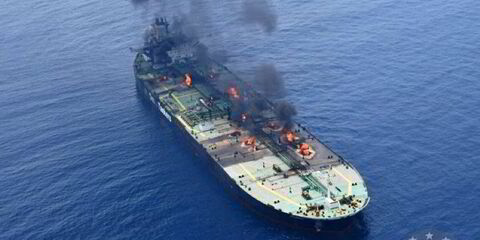Clarksons Securities has maintained its positive view on US tanker owner International Seaways after the share price quickly fell back to a “significant” discount to net asset value.
The stock closed in New York at $49.35 on Thursday, 29% below the investment bank’s calculation of NAV at $68.60 per share.
The price had nearly reached parity with NAV, but weakening tanker markets and the recent global share sell-off pushed it down again, analysts led by Frode Morkedal said.
Second-quarter results coming in below expectations this week caused a further drop.
“As we remain positive on the tanker market outlook, we believe that Seaways should be able to reduce its discount once again as the market improves over the coming months,” the analysts added.
Clarksons has reiterated its “buy” rating, with a $70 target price.
Ebitda came in at $167m, below the $175m consensus estimate, as spot rates slipped towards the end of the quarter.
“Despite the earnings miss, the company’s strategy of maintaining a competitive yield combined with fleet renewal remains unchanged,” Morkedal and his team said.
The shipowner said preparations were made in the second quarter that will help its fledgling Aframax International pool with Chile’s Ultranav get off to a better start on cargoes from the west coast of Canada.
But they were the primary reasons Seaways failed to meet analysts’ earnings expectations.
Chief financial officer Jeffrey Pribor told researchers on an earnings call that Seaways had absorbed about 200 more off-hire days fleetwide than previously guided as it tried to opportunistically take advantage of dry-docking opportunities.
Focus will continue on fleet renewal
Regarding fleet renewal, Clarksons said the delivery of six MRs built in 2014 and 2015, and the sale of three older MRs, lowered the average age of the asset class by a year.
“Despite this improvement, the MR fleet remains on the older side with an average age of 13.9 years, indicating a likely continued focus on fleet renewal,” the analysts said.
The LR1 fleet is the second-oldest part of the fleet, but six vessels on order with delivery in 2025 and 2026 will address this issue, they argue.




